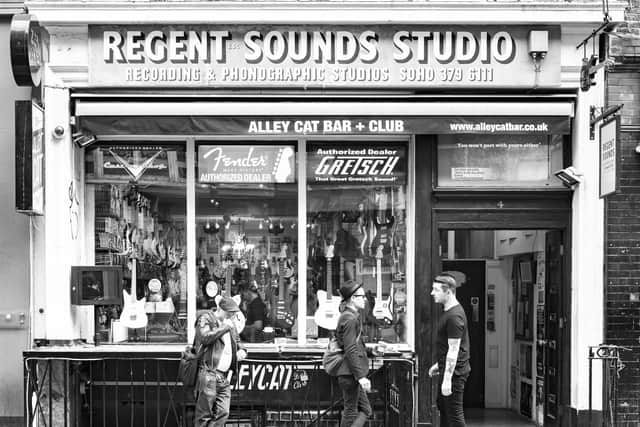Stroll down UK's Tin Pan Alley which nurtured the Stones, Beatles, Pink Floyd and the Sex Pistols
and live on Freeview channel 276
In the UK, Denmark Street in London was known as our own Tin Pan Alley but never to the same pedigree. A relatively short street and a walk from Soho to Covent Garden, it was the street in post-War Britain where music deals were drafted and signed.
In a brand-new book by journalist Peter Watts simply called Denmark Street (Paradise Road, £20), he traces the roots of the occupants and how it developed while still remaining London’s street of sound. The much-missed music weeklies Melody Maker and New Musical Express (NME) were founded here, The Beatles signed their first publishing contract with Dick James Music, and the Rolling Stones recorded their first album in a basement in Denmark Street.
Advertisement
Hide AdAdvertisement
Hide AdThere is a café where David Bowie recruited his new band, where Jimmy Page would have tea between recordings in his pre-Zeppelin days, and where Elton John started work as an office boy. The Kinks, the Who and Small Faces all recorded here, and the Sex Pistols rehearsed and lived in a shed behind the Hipgnosis offices where Pink Floyd album artwork was created.


It was the music publishers that started it all off though, starting with Francis, Day & Hunter then followed by Lawrence Wright, Noel Gay, Campbell Connelly and so on. Arriving in Denmark Street in 1927 Jimmy Kennedy was a gifted writer with songs like the Hokey Cokey and Teddy Bears Picnic by holding on to his royalties he would make money for years to come. As a lyricist he had several partners in songs like Red Sails In The Sunset, Long Way To Tipperary and Harbour Lights which was recorded by Vera Lynn, Bing Crosby, Elvis Presley and charted for The Platters.
In 1964 Kennedy was earning £2000 a year for South Of The Border alone as it was recorded many times from Frank Sinatra to Herb Alpert. Lionel Bart’s songs were published by Robbins of Denmark Street and after Rock With The Caveman (Tommy Steele) and Living Doll for Cliff Richard (which he wrote in six minutes), he branched into musical theatre with Fings Ain’t What They Used To Be which played the West End for 886 performances. His next show was Oliver! in 1960, a huge success which at one time was earning him £16 a minute. As the years moved on a music venue opened along with a comic shop, music bookshop and a 55-room hotel called Chateau Denmark.